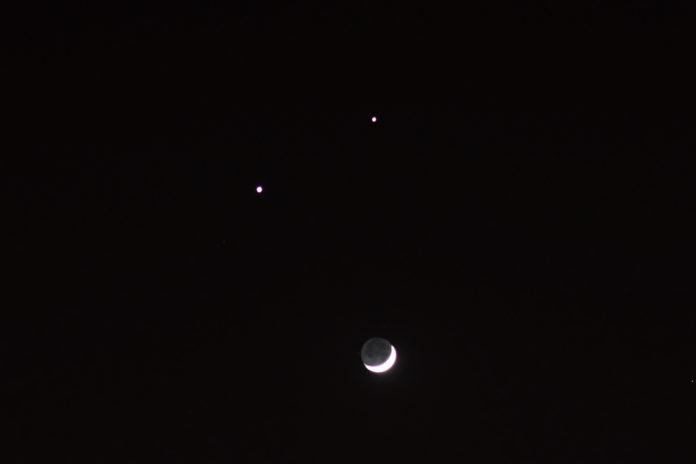Stargazers will be on duty in February because there will be a light show of epic proportions. There will not be a blaze of meteorites or shooting stars, but rather, Venus will make a grand entrance next to our humble moon. You will need to live or travel to a Northern latitude in order to see the event. As long as Mother Nature cooperates and keeps the sky clear, you will catch a glimpse of two unusually bright objects almost sitting on top of each other in the darkness.
The moon will have a sharp waxing crescent light. A crescent moon is seen directly before and after a new moon. A sliver of sunlight beams on the surface causing a shimmering effect against the night sky. When the crescent is waxing, it means it is pointing top to bottom or at a slight angle. The dark side of the moon may pick up a small amount of the reflection, but in general, your eyes will only pick up the crescent glow.
As far as the galaxy is concerned, Venus is sitting right next to the earth. From our vantage point, it is millions of miles away, but it is a close celestial body. Although similar in size to our planet, Venus cannot sustain life as we know it. Because of its proximity to the sun, the mass is extremely hot. It is hot enough to vaporize lead. Scientists can see eruptions spewing out gases on the surface. To say the least, it has an unfriendly environment, but this February, the hot mess will melt astronomy fan’s hearts. During this event, Venus will be almost 100 million miles away, and the moon will be sitting out at just over 200,000 miles. The distance, rotation, and timing will just be perfect for the sun, earth, moon, and Venus to put on a rare show.
When venturing out to observe the night sky, the easiest object to spot will be the crescent moon. Once you lock onto it, look above it and scan. Venus will look much brighter than any star in the sky. The two objects will give off a glow versus a pulsing light. You should be able to see them without a telescope, and they will be visible most of the night. Take the time to enjoy the heavenly show because the next time you will get the opportunity to see the pair together again will be just shy of one year.









